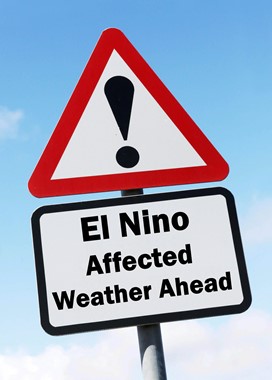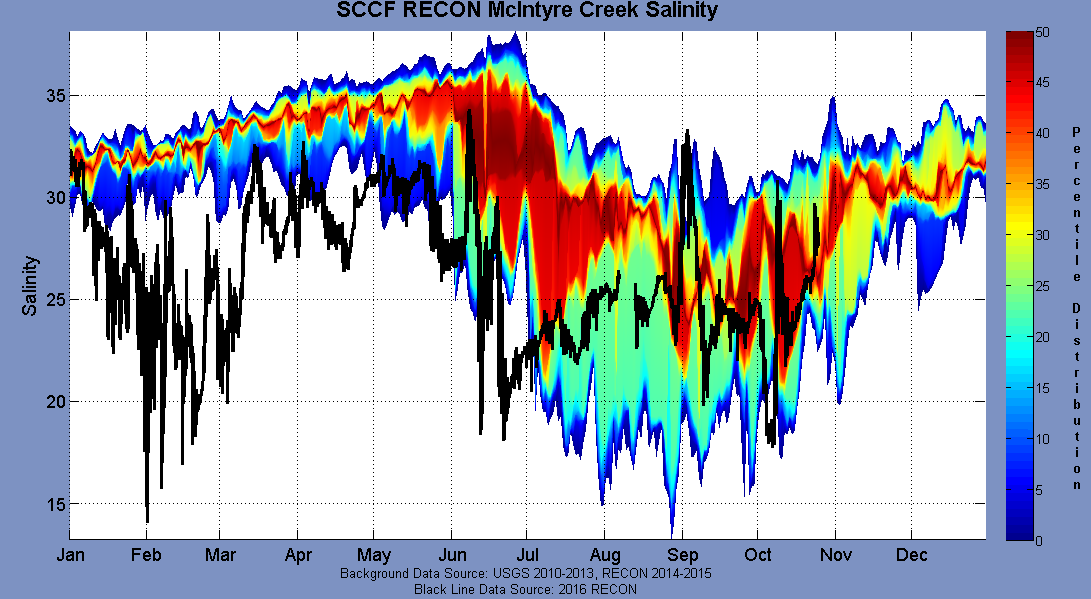What's New
Weather Stations Update
Originally deployed in 2012, thanks to funding from the West Coast Inland Navigation District (WCIND) through a grant from Lee County, the RECON weather stations became the first weather stations in this area located directly over the water. Designed to give researchers and boaters near real-time information on the current over water weather conditions, they quickly became the go to weather source for the local boating community. ...
Read moreThe River, Estuary and Coastal Observing Network (RECON) is a network of water quality sensors deployed throughout the Caloosahatchee river and estuary to provide real-time, water quality data to scientists, policy makers, and the general public.
The extensive watersheds of the Caloosahatchee (1,400 square miles) and Lake Okeechobee (4,400 square miles) each contribute water that flows into the Caloosahatchee estuary and the Gulf of Mexico. Water quality is affected by both Lake Okeechobee discharges and runoff from the Caloosahatchee watershed. Over time, these watersheds have changed from low-nutrient loading marshes and wetlands to high loading urban and agricultural land uses. Nutrients increase turbidity and decrease concentrations of dissolved oxygen (DO). In addition, excess nutrients fuel nuisance algal blooms. Losses of low-nutrient adapted communities, such as seagrasses have contributed to changes in fish, crustacean and marine mammal communities.




 El Nino conditions in the south usually result in high rainfall and flooding. During what is a 'dry period' in a normal year, record rainfall, flooding, and discharges from the Caloosahatchee and Lake Okeechobee were observed to cause decreases in salinities and algae blooms in the lower estuary. Salinities in the lower estuary are usually between 28-32 during the dry period (November-May) and between 25-30 during the wet period. In the first half of most years, salinity is high and not variable (Figure 1 below). During the wet period, rainfall and flow can cause salinity to decrease and be more variable because rainfall doesn't always occur on the same day(s) every year. The colored charts show the 'normal' values for salinities as red and orange, and more rare values as blue and green. The black line shows 2016 salinities in the J.N. "Ding" Darling National Wildlife Refuge and McIntyre Creek. Studies have shown that decreases in salinity at McIntyre Creek are driven by discharges from S79, a combination of watershed flow and flood control flows from Lake Okeechobee. The 2016 values were well below normal and had effects on seatrout growth (Bortone et al. ) and seagrass leaf growth (Milbrandt and Siwicke 2016).
El Nino conditions in the south usually result in high rainfall and flooding. During what is a 'dry period' in a normal year, record rainfall, flooding, and discharges from the Caloosahatchee and Lake Okeechobee were observed to cause decreases in salinities and algae blooms in the lower estuary. Salinities in the lower estuary are usually between 28-32 during the dry period (November-May) and between 25-30 during the wet period. In the first half of most years, salinity is high and not variable (Figure 1 below). During the wet period, rainfall and flow can cause salinity to decrease and be more variable because rainfall doesn't always occur on the same day(s) every year. The colored charts show the 'normal' values for salinities as red and orange, and more rare values as blue and green. The black line shows 2016 salinities in the J.N. "Ding" Darling National Wildlife Refuge and McIntyre Creek. Studies have shown that decreases in salinity at McIntyre Creek are driven by discharges from S79, a combination of watershed flow and flood control flows from Lake Okeechobee. The 2016 values were well below normal and had effects on seatrout growth (Bortone et al. ) and seagrass leaf growth (Milbrandt and Siwicke 2016). 